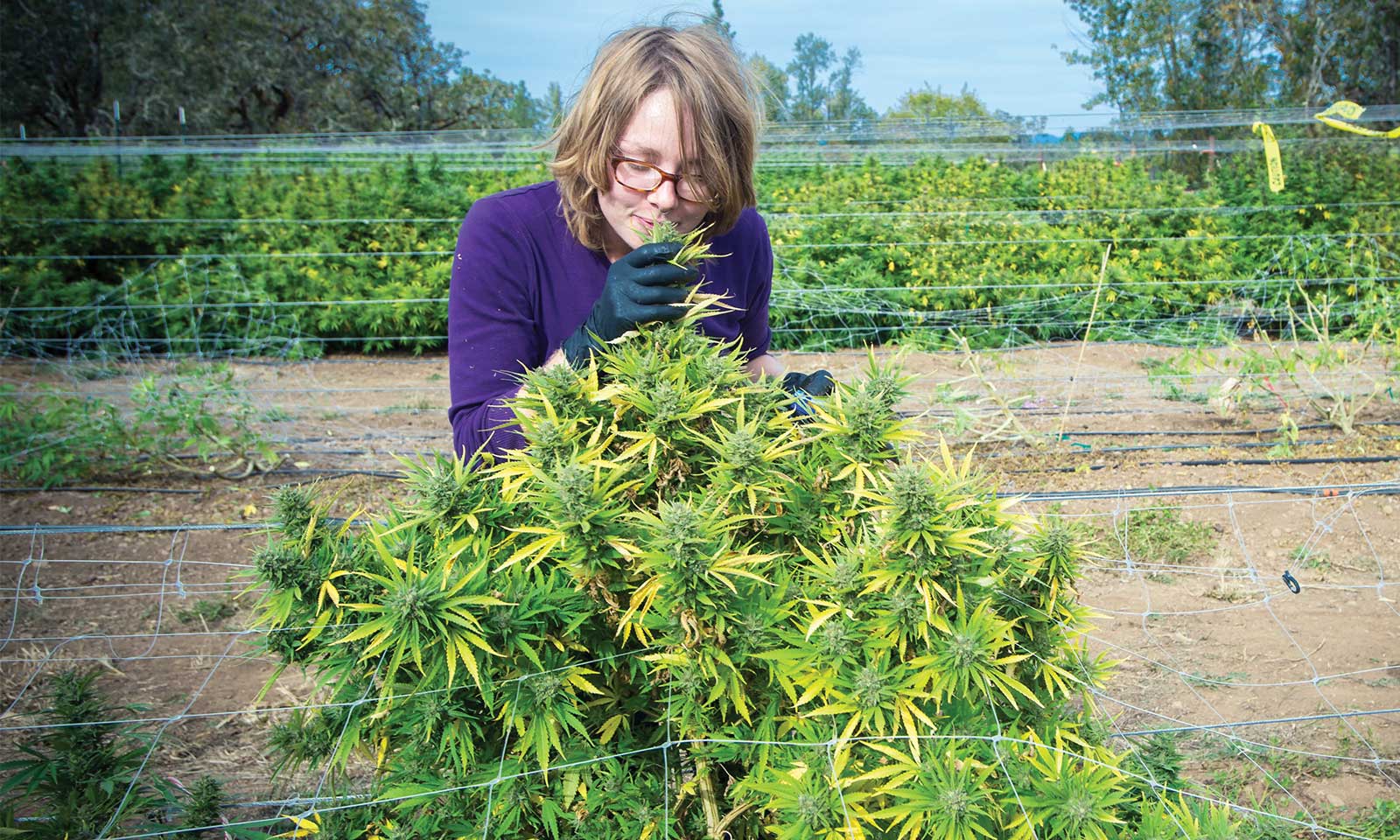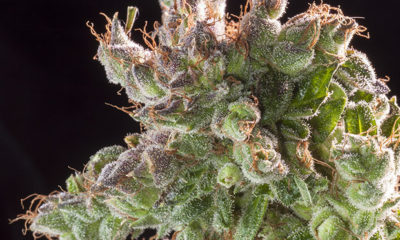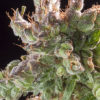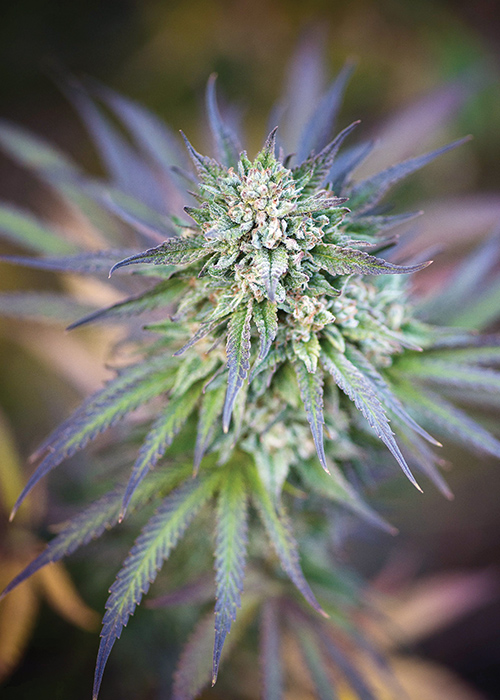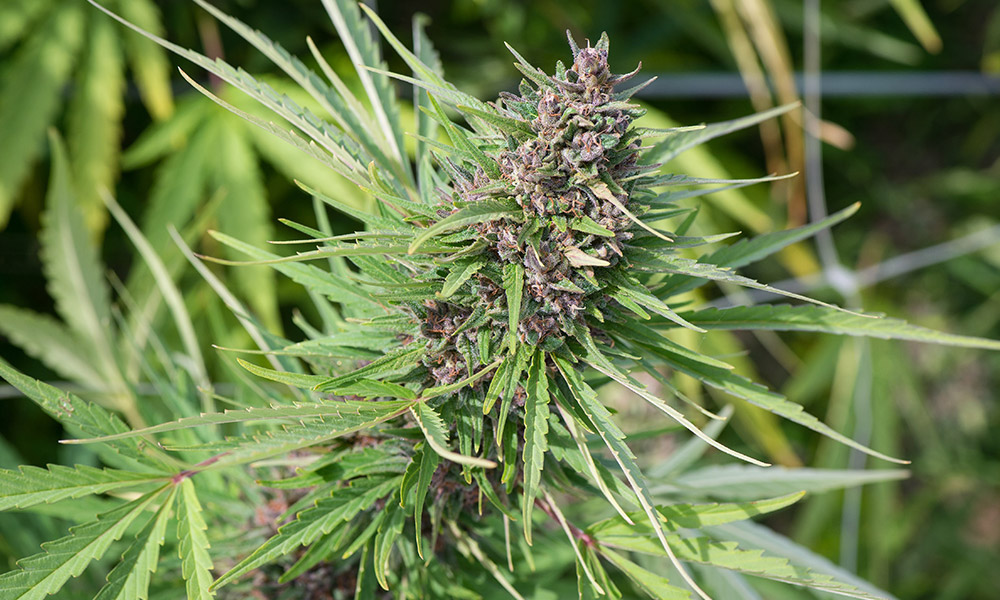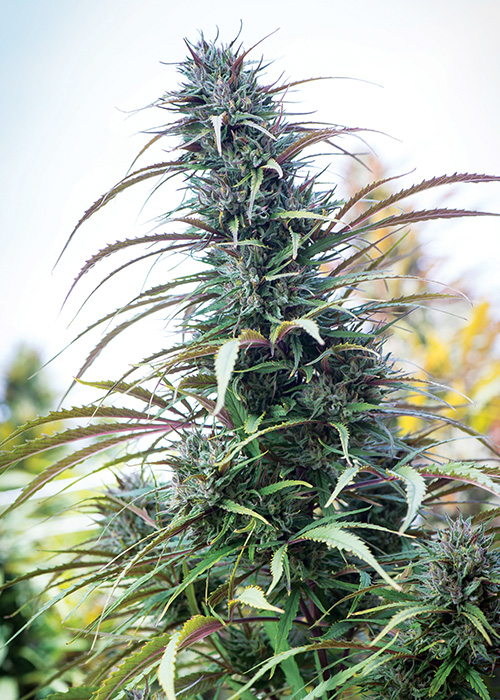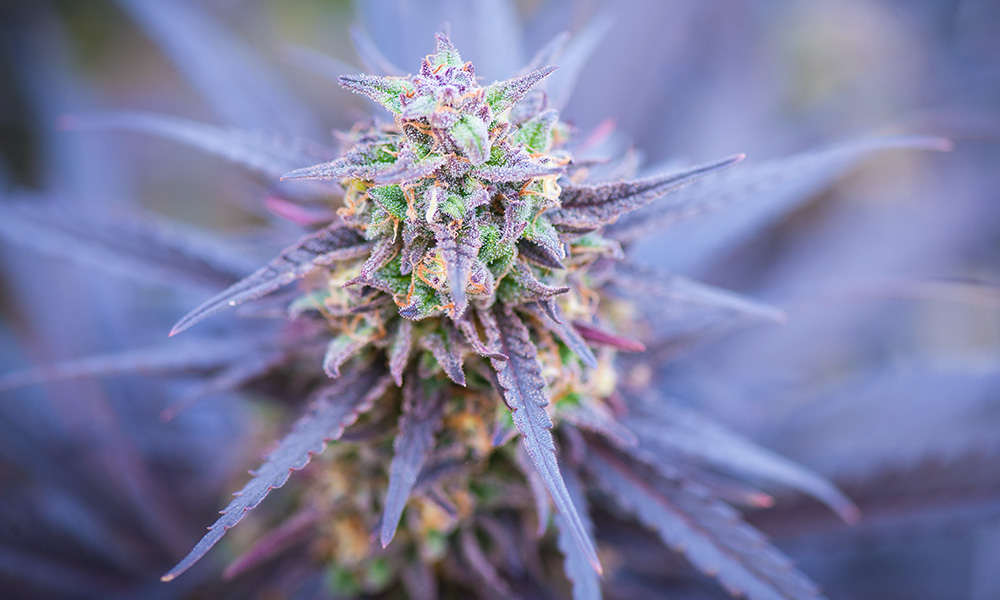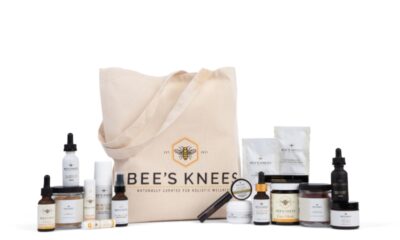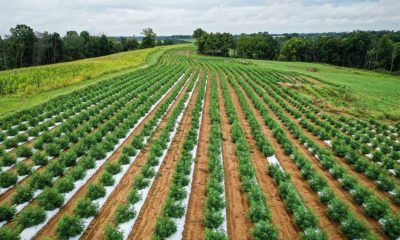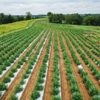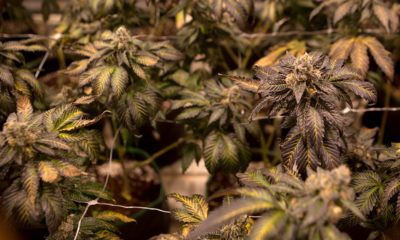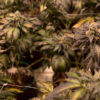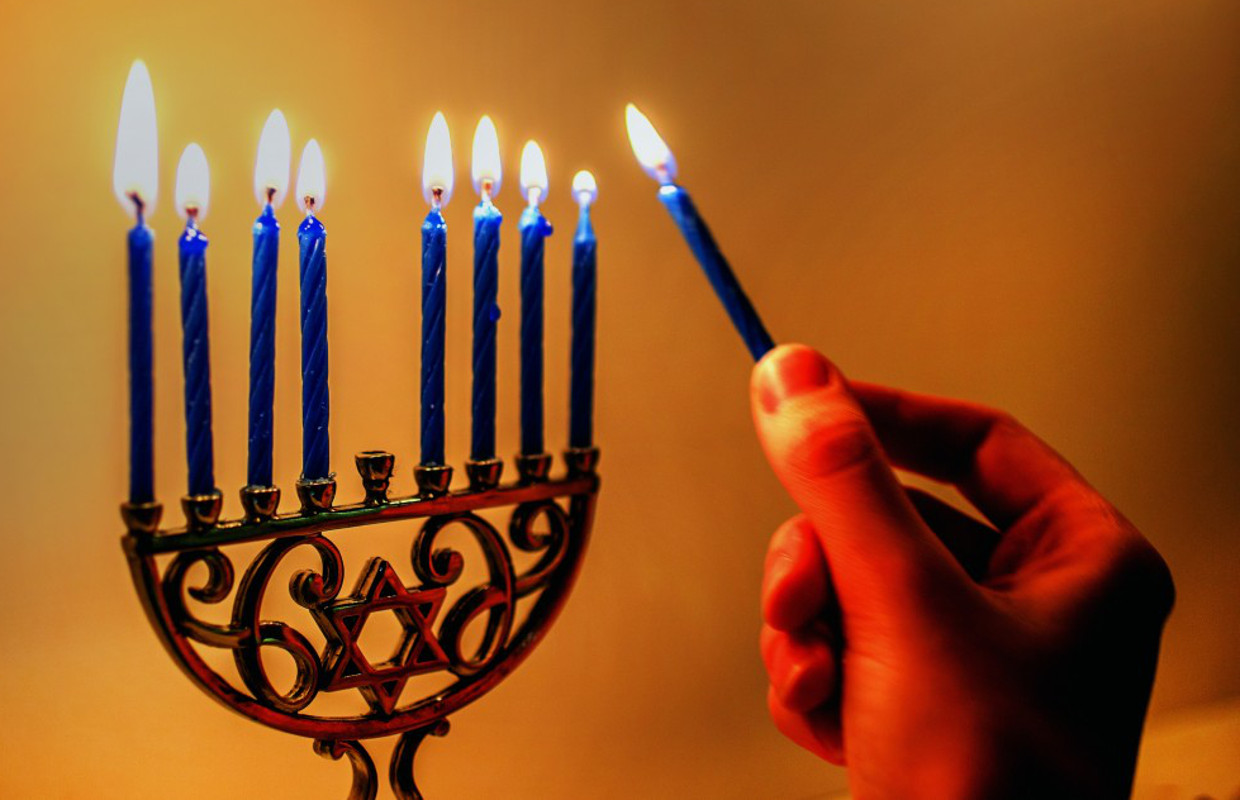The Rise of CBD Strains
East Fork Cultivars, a farm in rural Oregon, is working to breed high-CBD strains specifically designed to address different ailments.
In the southern Oregon town of Takilma — a longtime hippie enclave just above the California border in the foothills of the Siskiyou Mountains — one farm is focused on developing new strains of cannabis. Their mission is not to breed for maximum THC or any particularly trendy flavor expression, but to create strains with an optimal balance between CBD, THC and various terpenes to achieve tailored effects.
The farm is called East Fork Cultivars, and its CEO Mason Walker is a former journalist and editor at the Portland Business Journal who himself uses medical marijuana to control his pain from a serious neck injury in his youth.
“Our roots are in the medical approach to cannabis breeding,” Walker says. “We started selecting varieties high in CBD for therapeutic effect.”
In order to create strains that can best address specific ailments, East Fork Cultivars has focused on cultivating under three broad categories. First, they’re growing out “CBD-dominant” varieties to find phenotypes that typically have less than 1 percent THC and subtle effects, including with Ringo’s Gift, Sour Tsunami and Cenarius. Second, they’re cultivating “CBD-rich” varieties have high CBD content but also around 5 percent THC, including Bubba Kush and an East Fork original strain, Pineapple Jager. Third, they’re growing “THC-dominant” varieties that are the more typically potent strains that outlaw growers long strove for, including Strawberry Satori.
With this spectrum of cannabinoid concentrations, Walker says their selections appeal to “new cannabis consumers who are curious,” but not necessarily looking to get high.
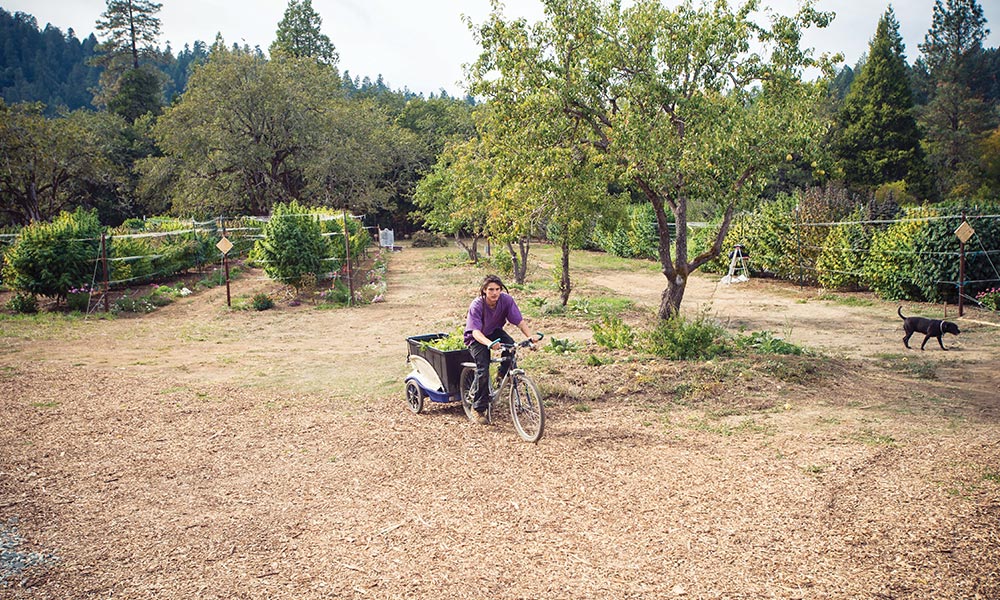
Each fall, the team at East Fork Cultivars harvests one acre of CBD-rich cannabis from its farm in Southern Oregon’s Illinois River Valley.
Through their work developing a wide range of CBD-rich phenotypes and breeding new strains, East Fork is at the forefront of the larger CBD trend, trying to ensure that the increasing crowds of cannabis consumers looking for CBD strains have more options to choose from than the handful currently on the market.
“We’re still early on in our breeding work,” Walker says. “Of our 15 top-selling varieties, three of them we bred ourselves and the other 12 are well-established varieties that someone else bred — but we expect that number to basically flip in the next two years.”
From Llamas to Cannabis
East Fork was started by the brothers Nathan and Aaron Howard. Aaron, now the company’s chief operations officer, moved from his native Portland to southern Oregon about 10 years ago to grow cannabis under the state’s medical program. (Oregon voted to legalize medical marijuana in 1998, the second state to do so after California.) He initially cultivated as caregiver for a third brother, Wesley, who suffered from neurofibromatosis and epilepsy.
In 2015, Aaron was among the first cultivators in the country to start growing high-CBD strains, and the following year, purchased the 9-acre property in Takilma. At the time, the property was a llama ranch, so the East Fork team inherited three llamas along with the land. The animals have since passed on, but the company’s logo is still a llama — and the laser focus on CBD has not wavered.
“We supply CBD-rich cannabis to other companies who turn it into infused products,” Walker says. “We extract oils for chocolate bars, topical salves, tinctures and beverages.”
Walker says that East Fork is shying away from selling cannabis flowers to consumers, because he thinks the end of cannabis prohibition is changing the way people want to ingest the plant.
“Back during Prohibition [in the 1920s and ’30s], people wanted high-potency moonshine,” says Walker. “With cannabis prohibition, there was the same secretiveness and incentive for high-potency stuff. Now that we’re moving out of prohibition, people are demanding more types of cannabis that are more nuanced. The same way we’re consuming more wine and beer as opposed to moonshine. Nowadays, you don’t hear people say, ‘What’s your strongest stuff?’”
Breeding for CBD
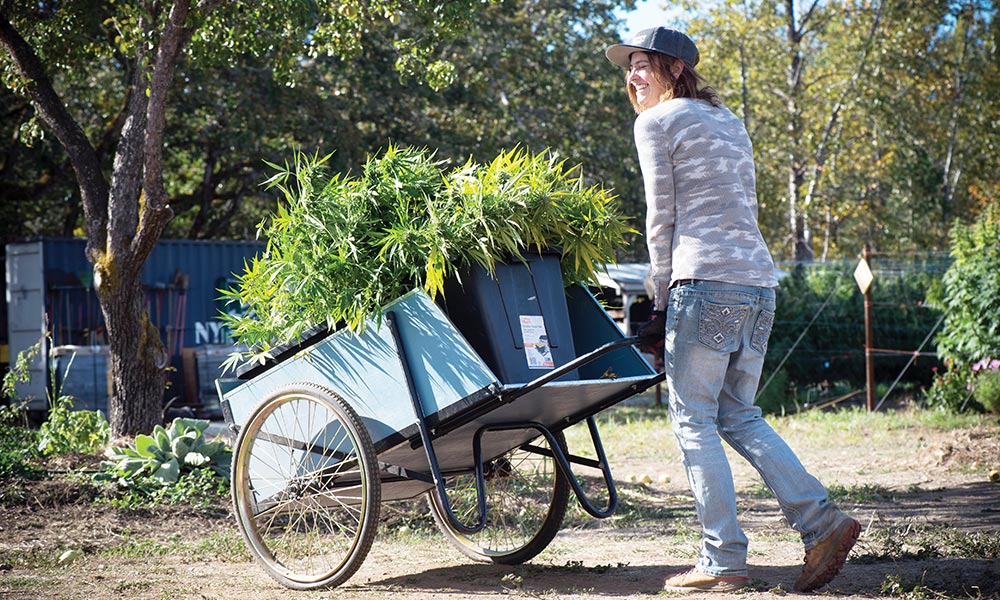
In 2017, the team at East Fork Cultivars harvested 3,300 lbs of cannabis uses garden carts and bicycles.
East Fork’s most cutting-edge work is its on-site breeding program. When selecting and testing new strains, Walker says the farm is focused on creating strains with high levels of “chemical diversity.”
“The beauty of cannabis is it’s one of the most chemically complex plants on the planet,” Walker says. “We focus a lot of time and energy and money on developing the largest diversity we can, in terms of combinations of CBD and terpenes.”
He notes that the linalool terpene, which smells like lavender, is often used to reduce anxiety, while the citrus-smelling terpene limonene is said to have an energizing effect.
“Multiple terpenes have synergistic interactions with each other, creating yet new effects,” he says. “That’s what makes cannabis really fascinating.”
One of East Fork’s original strains with notable limonene content is Wesley’s Wish, named for Wesley Howard, who found the strain gave him relief from his neurofibromatosis and epilepsy before he passed away last year. It is a cross between Pineapple Tsu and Purple Hindu Kush, which Walker describes as “one of the most popular THC-heavy strains in Oregon.” But while Purple Hindu Kush is typically more than 20 percent THC, Wesley’s Wish is only some 5 percent THC and 15 percent CBD.
Another emphasis of East Fork’s breeding program is to broaden the genetic pool of high-CBD strains, especially given the problem that high-CBD strains generally have smaller yields than high-THC strains.
“There’s not a lot of genetics available that are both high-CBD and high-yield, so we’re making them ourselves,” says Walker. “We’ve had a couple of hits — varieties that are high-CBD but also high-yield, and are promising in terms of appearance and other standards cannabis is generally judged by.”
East Fork has sourced their high-CBD genetics over the past five years from California, Oregon and Europe. The farm is currently expanding their genetic library by sourcing high-THC plants from Oregon growers and collaborating on breeding projects with other farms in the adult-use system, splitting the seeds at the end of the project.
Walker says East Fork is headed in the direction of growing entirely from seed rather than clone. This year, their ratio is about 50/50.
“Plants grown from seed have more vigor, more pest-resistance,” Walker says. “A lot of people call them a truer expression of the plant.”
East Fork is also bred with an eye on cannabinoids besides CBD and THC. Walker mentions tetrahydrocannabivarin (THCV), which is believed to have appetite-suppressing qualities. He also names cannabichromene (CBC), which has shown potential to inhibit tumor growth, and cannabigerol (CBG), which research suggests may help with vision problems such as glaucoma and intraocular pressure.
Business in the Gray Zone
Under Oregon cannabis regulations, the largest licensed cannabis grow can only cultivate up to 40,000 square feet of canopy, which is an area of just under 1 acre.
In Takilma, East Fork Cultivars has reached that 40,000 square feet canopy limit on a section of their original 9-acre plot of land. On the new 24 acres, Walker says they’re planning to grow hemp.
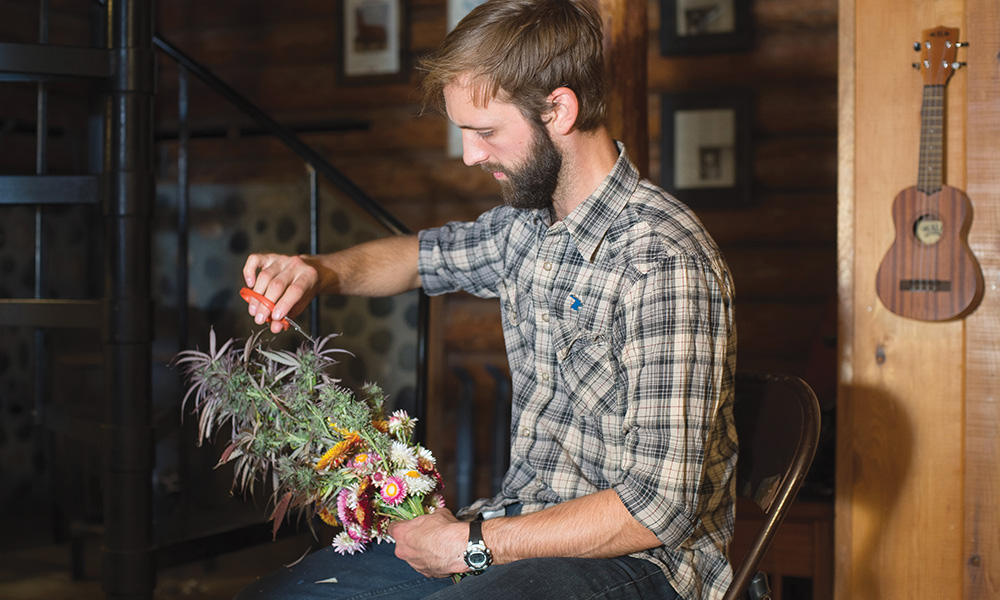
East Fork Cultivars Co-Founder and COO Aaron Haward prepares a cannabis bouquet, combining a fresh cannabis cola with dried straw flowers.
While CBD can also be extracted from hemp, this plant — legally defined as having less than 0.3 percent THC — falls under a different legal classification than cannabis. The cannabis strains grown on the original plot are overseen by the Oregon Liquor and Cannabis Commission, but the hemp plants on the new land will be overseen by the Oregon Department of Agriculture.
The cannabis farm is grown in a fenced-in area with a security camera system, as mandated by state law.
“The state figures the best way to keep feds at bay is to regulate the heck out of the industry,” Walker says.
But the gray area of difference between the cannabis and hemp regulations on the federal and state levels is clearly not interfering with business. Walker says the farm brought in $830,000 in revenue last year, and is expecting $1.2 million this year.
“We sold just over 1,200 pounds of cannabis last year, and we’re on pace to sell 3,400 pounds this year—nearly triple,” he says. “About 98 percent of our sales are high-CBD strains.”
“We’re just barely starting to scratch the surface of interest in CBD,” he says. “It is having a fad moment, but I think it will have more staying power than the acai berry, for instance. I think our research over the next years will uncover extensive uses both therapeutically and in terms of just enhancing peoples’ lives.”
TELL US, what is your favorite CBD strain?
Originally published in the print edition of Cannabis Now. LEARN MORE



